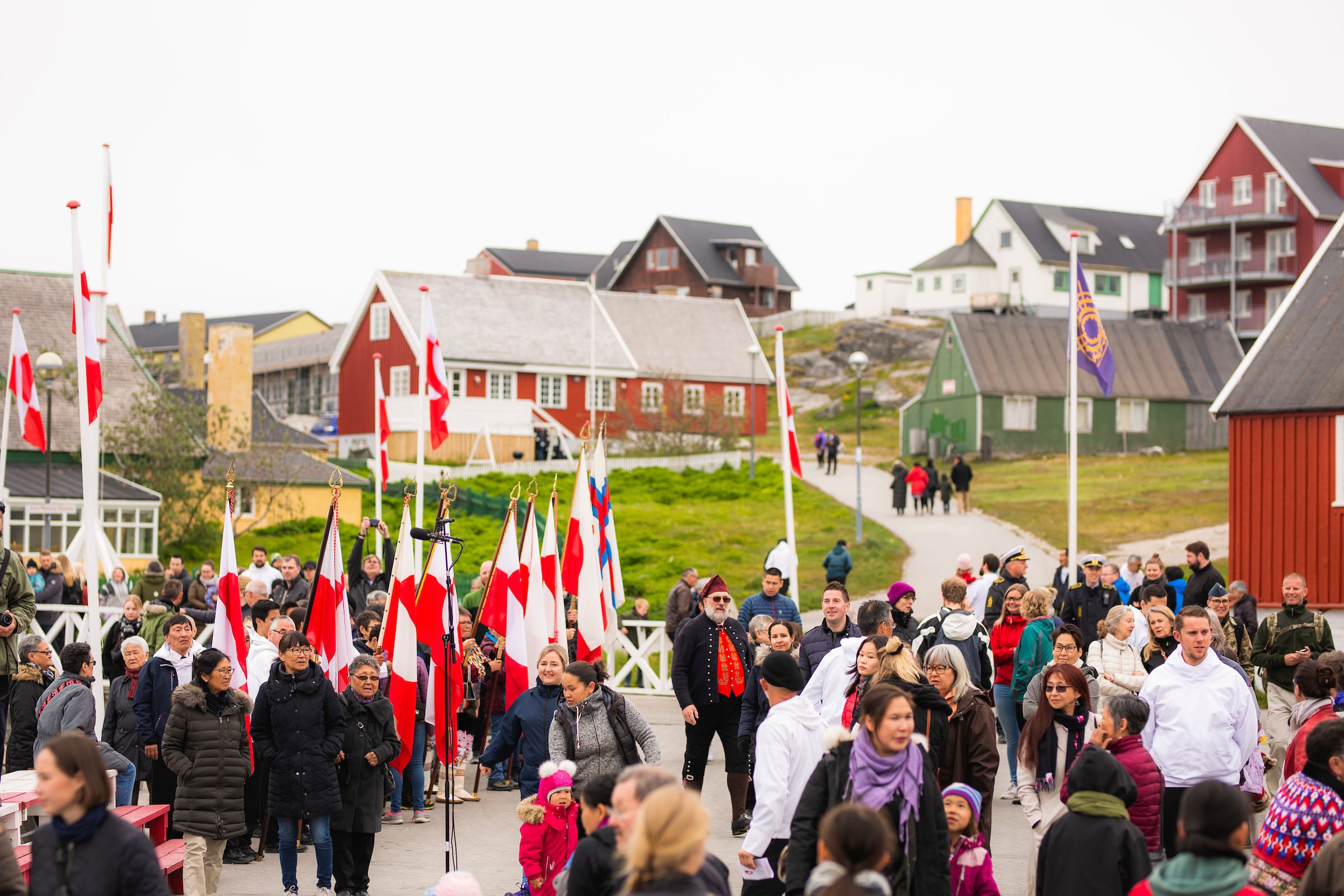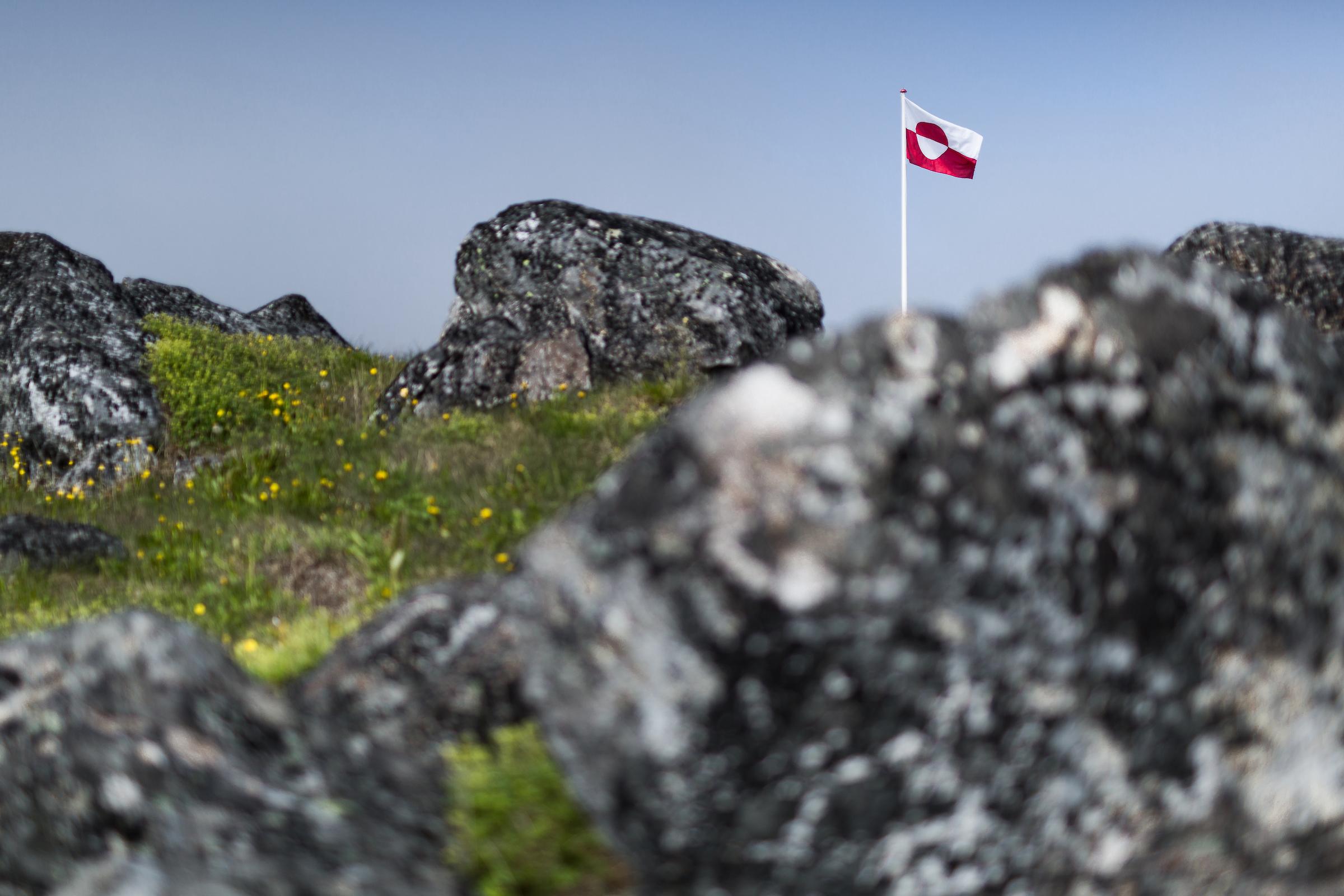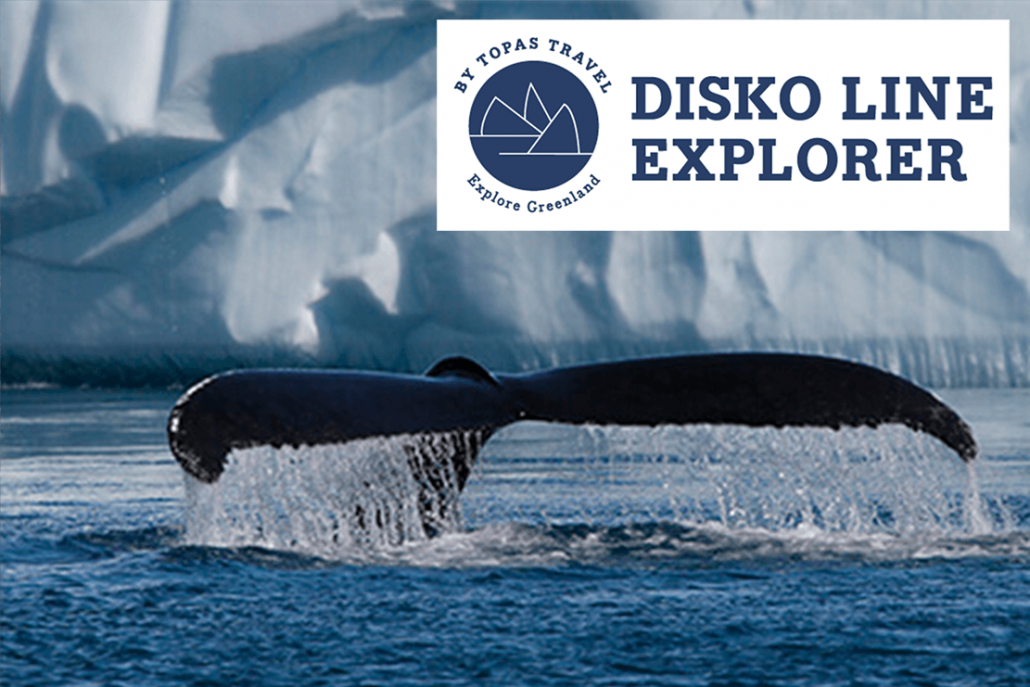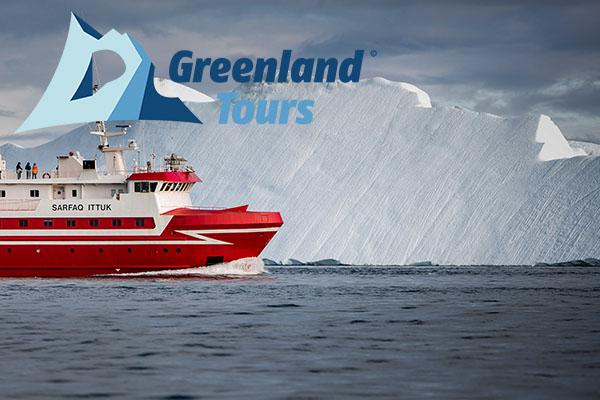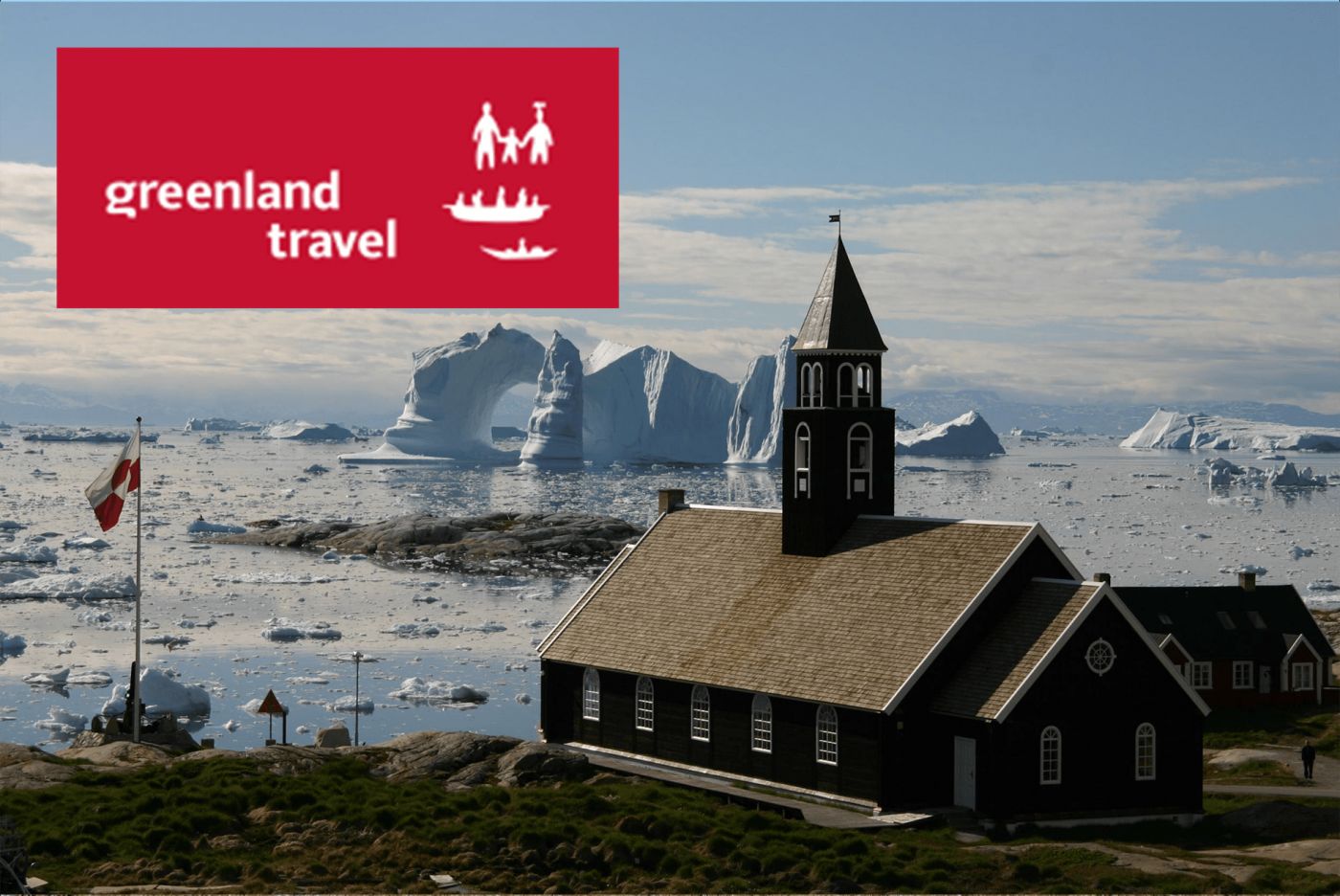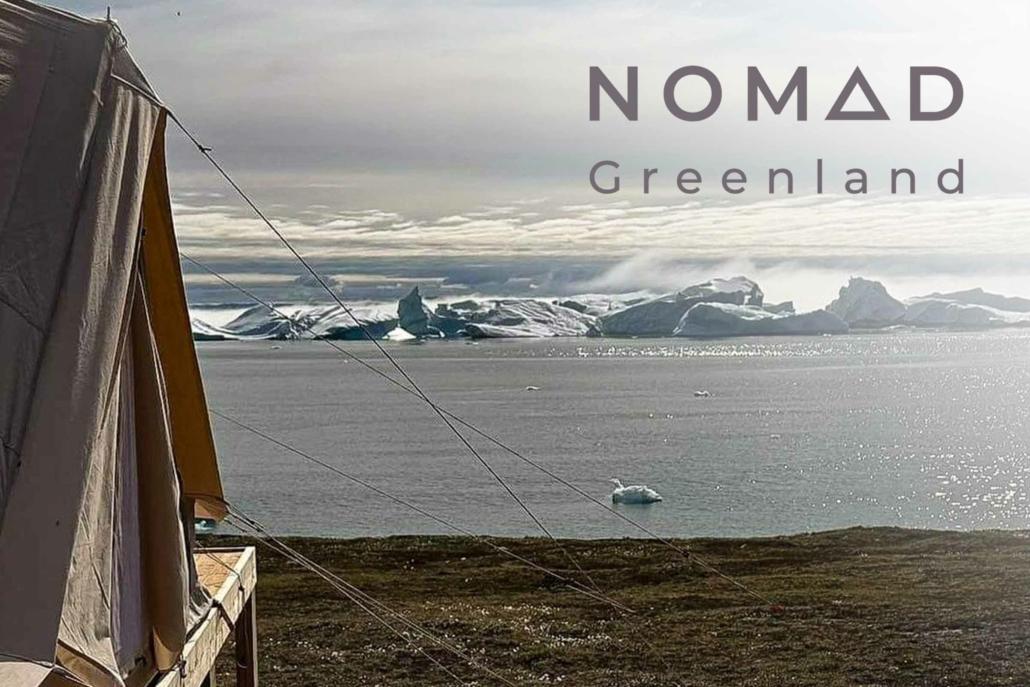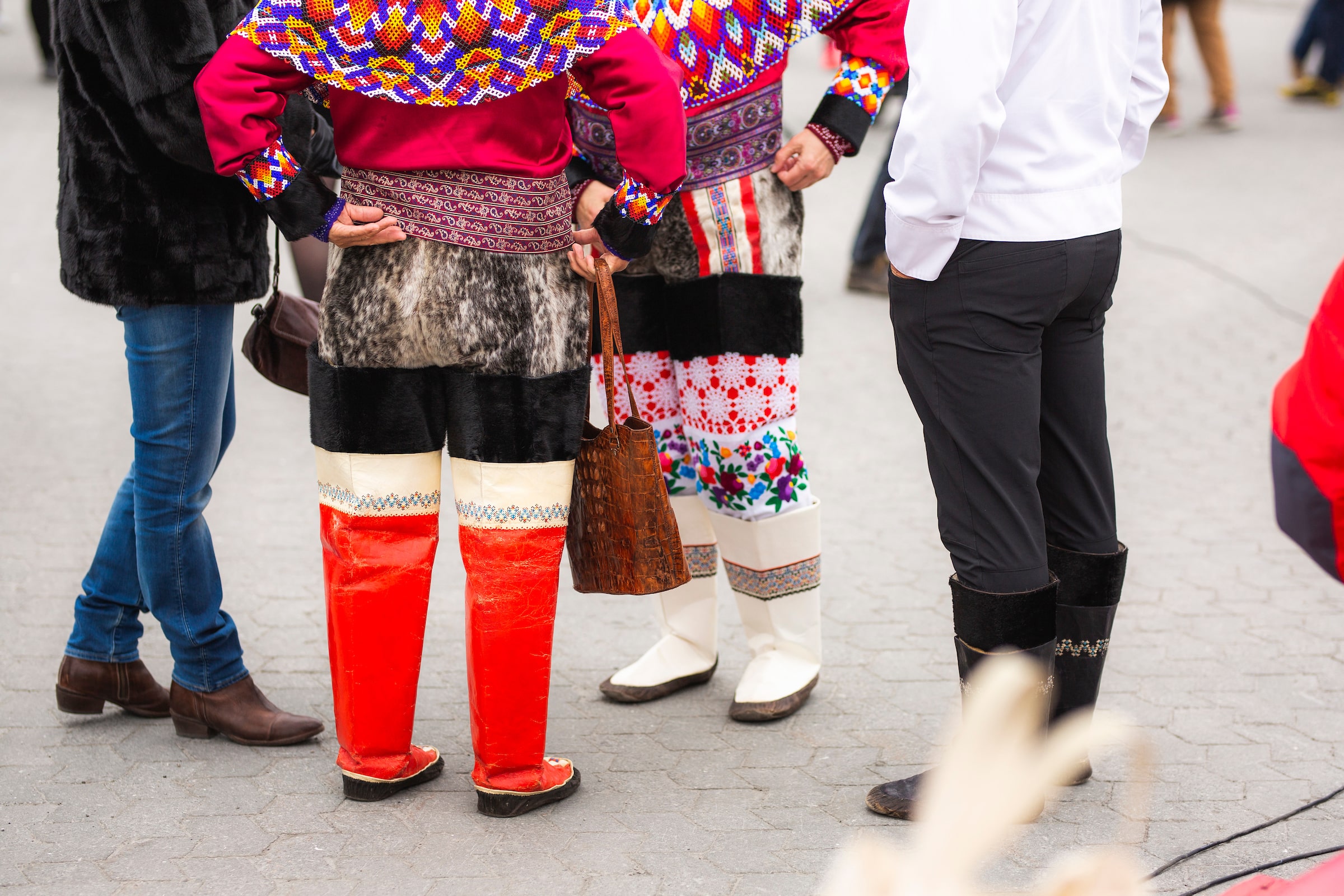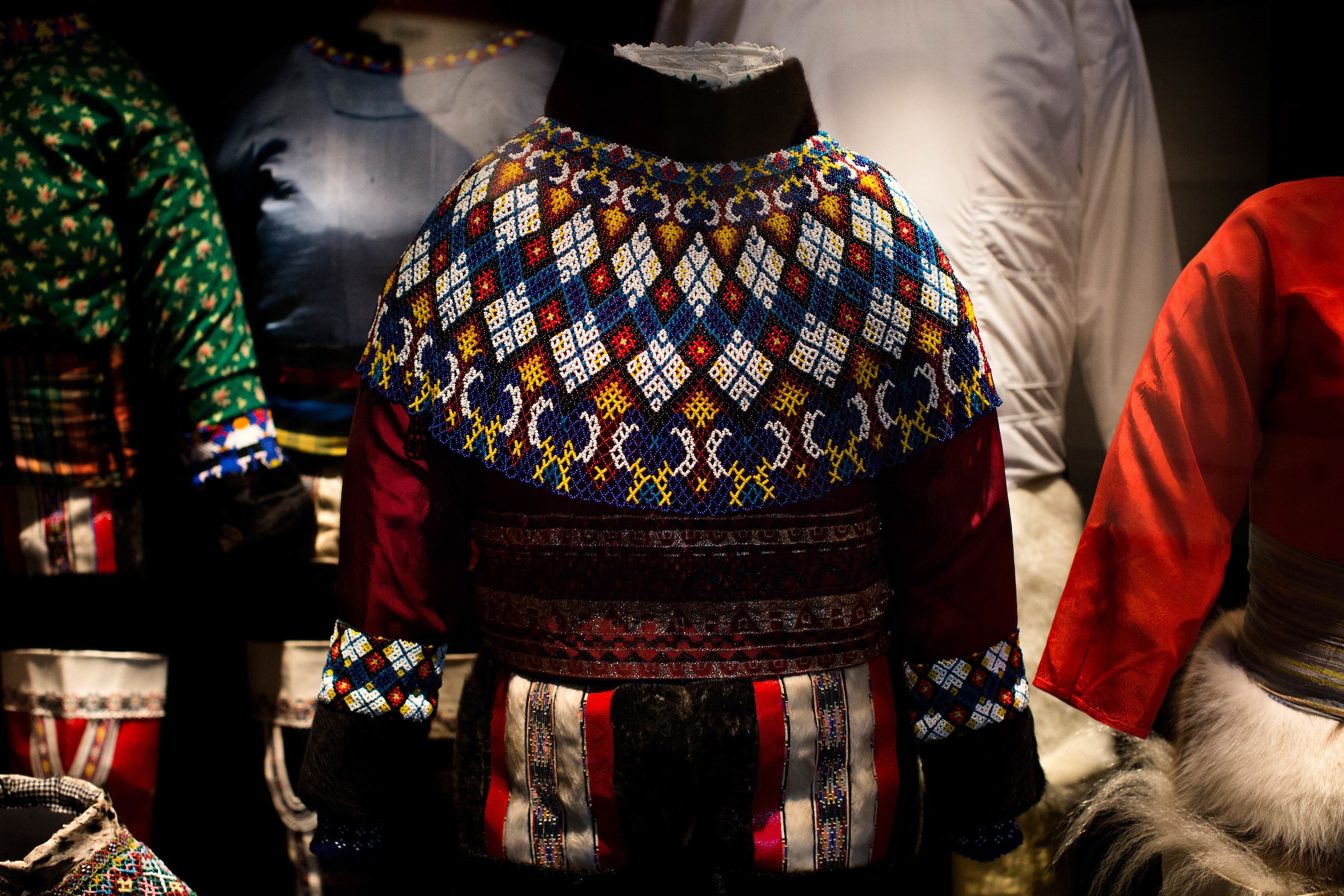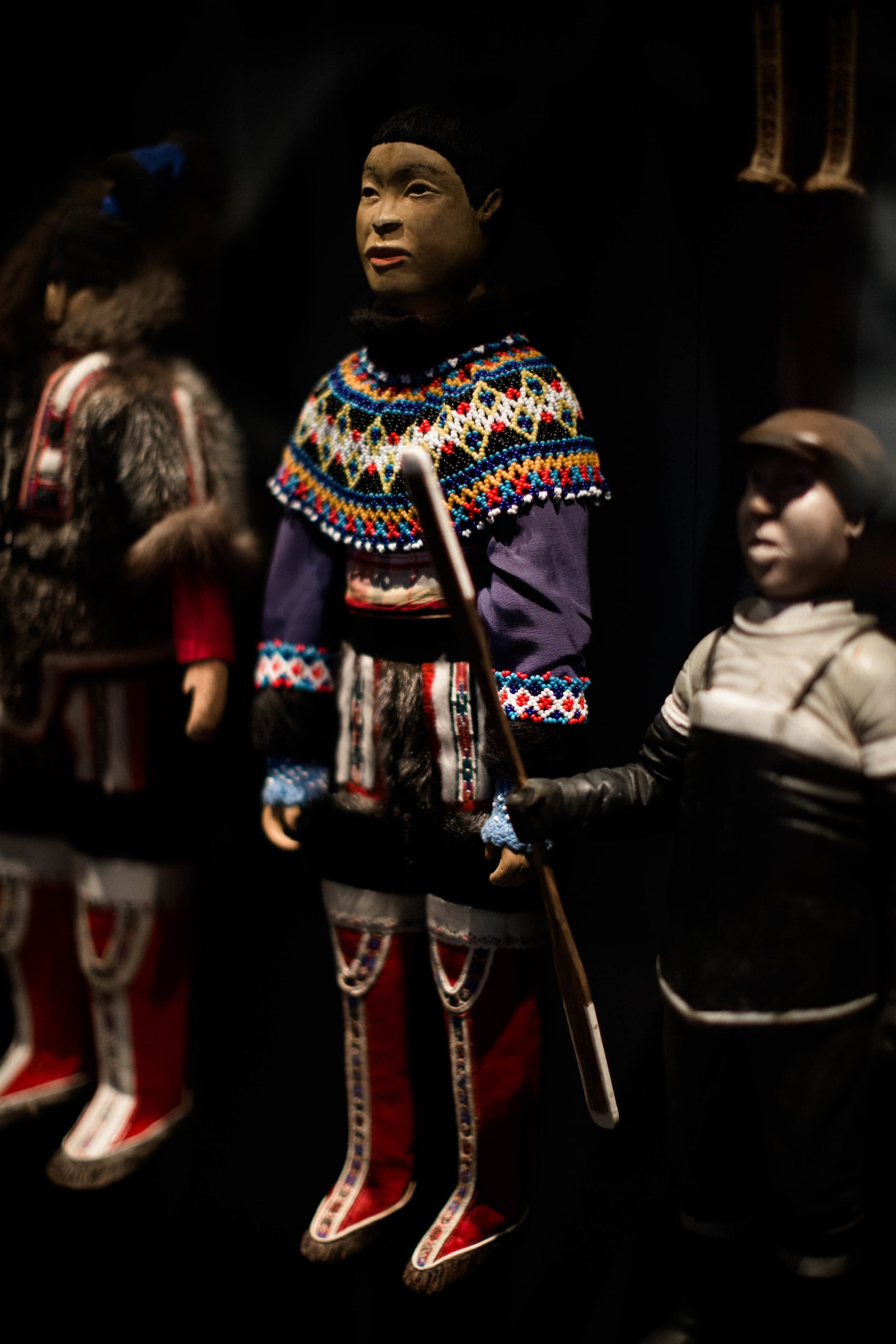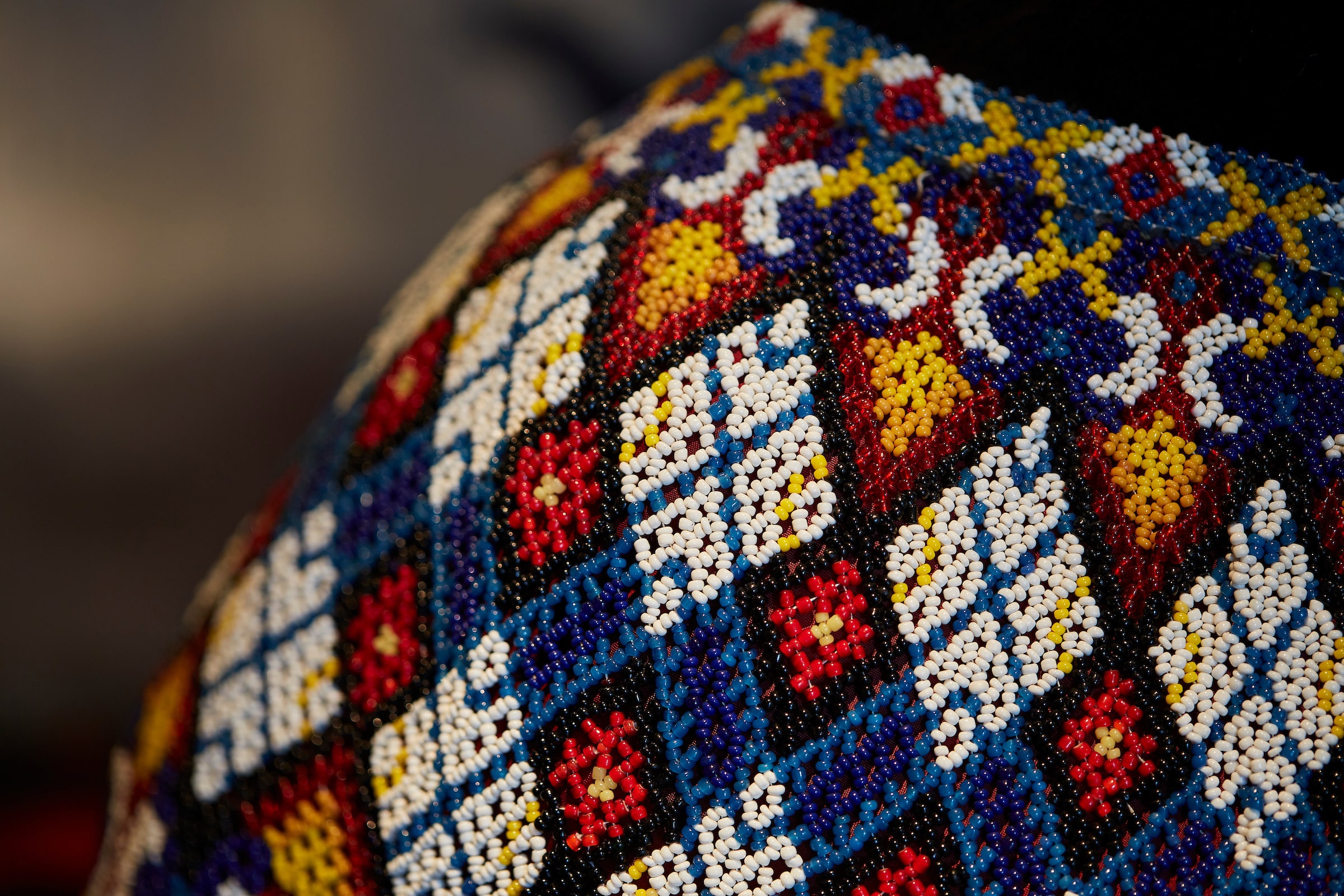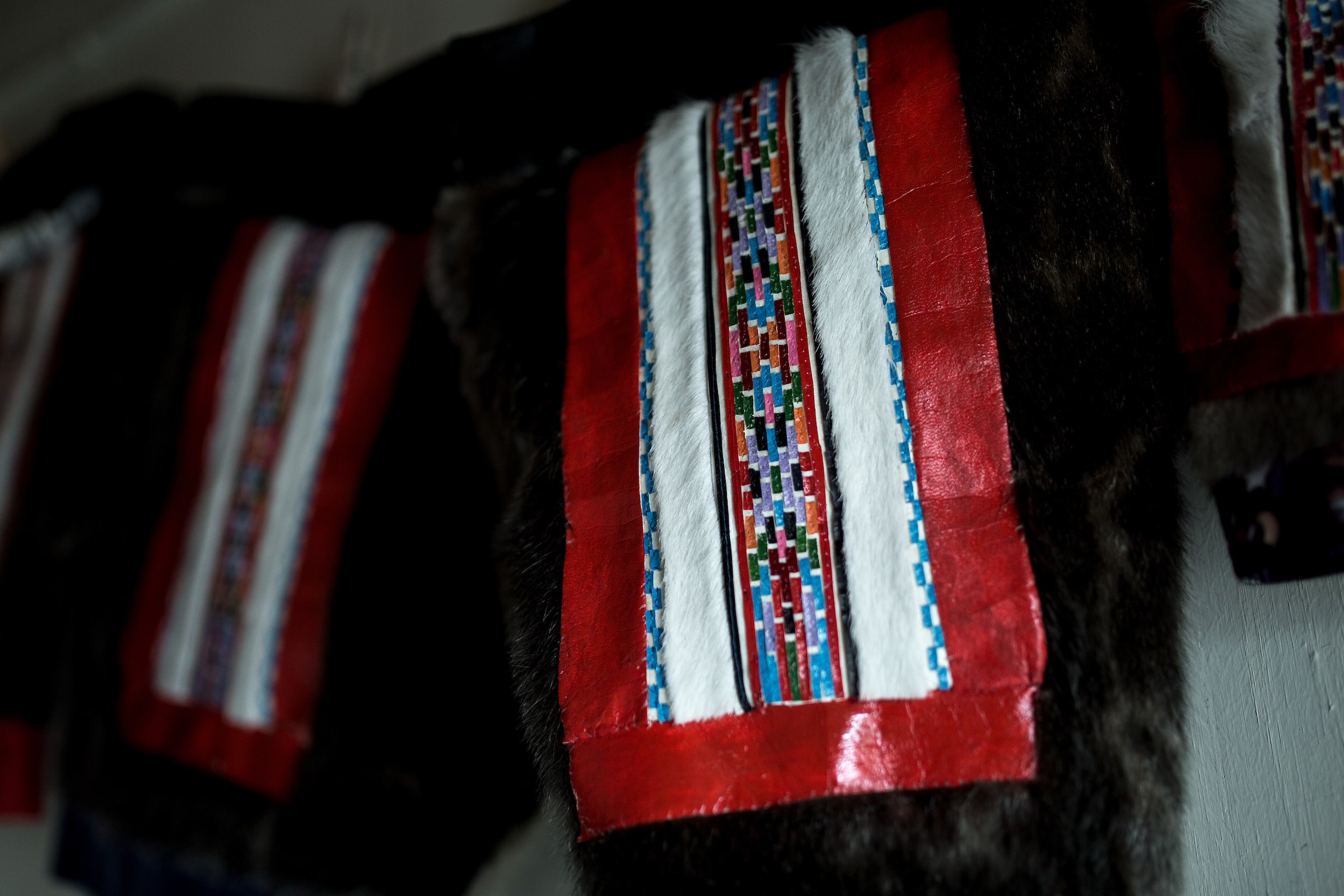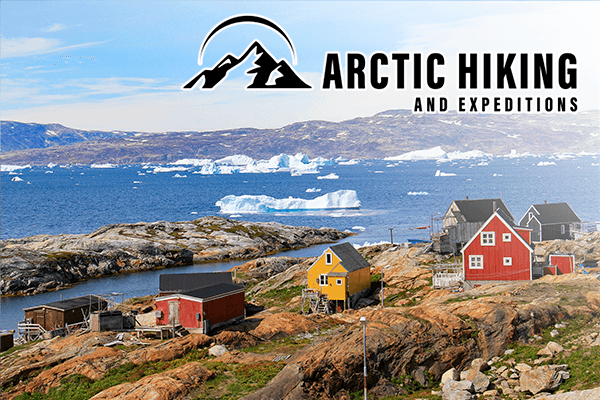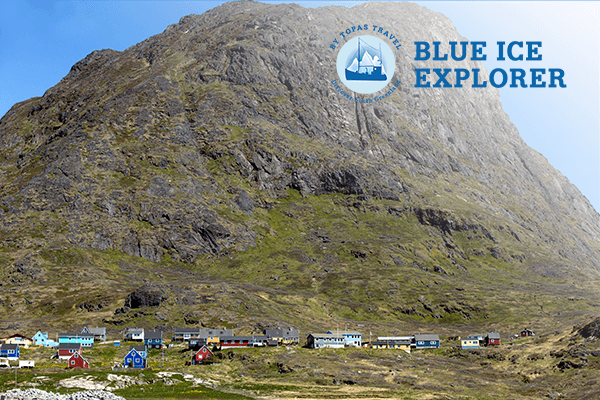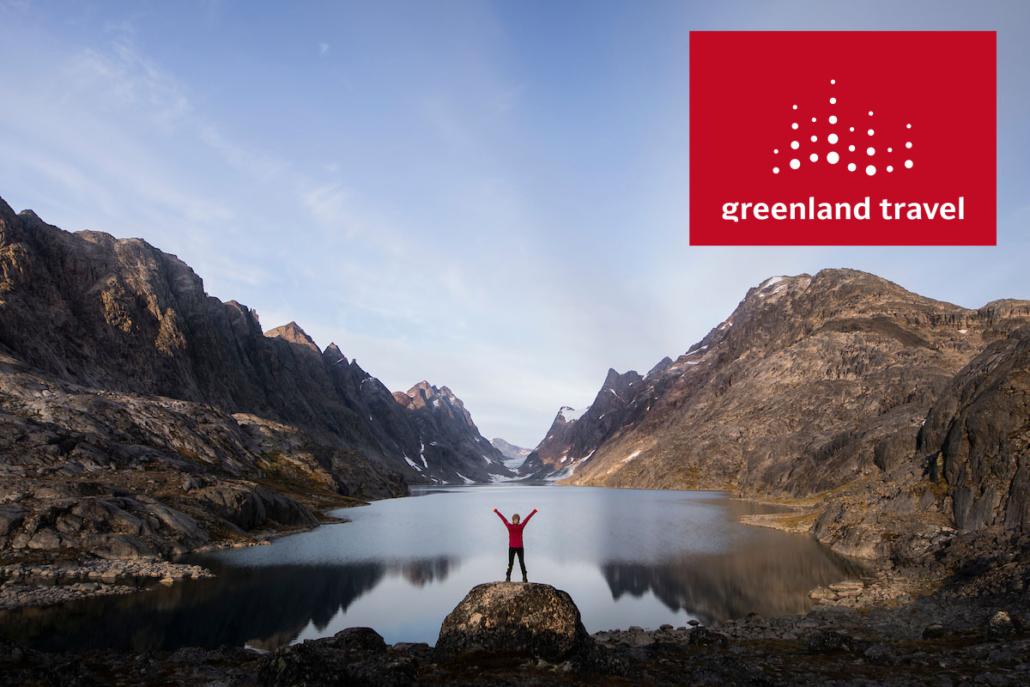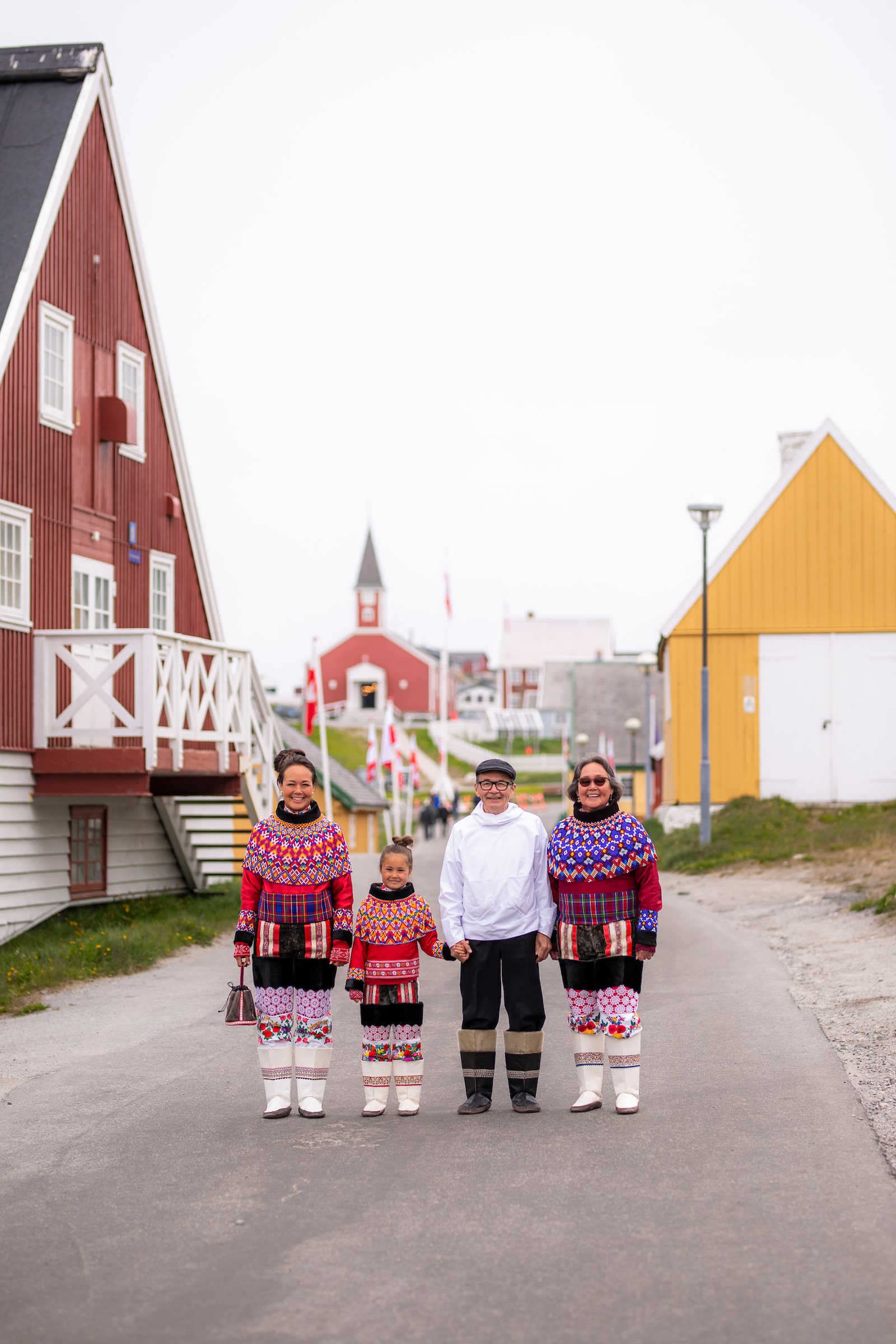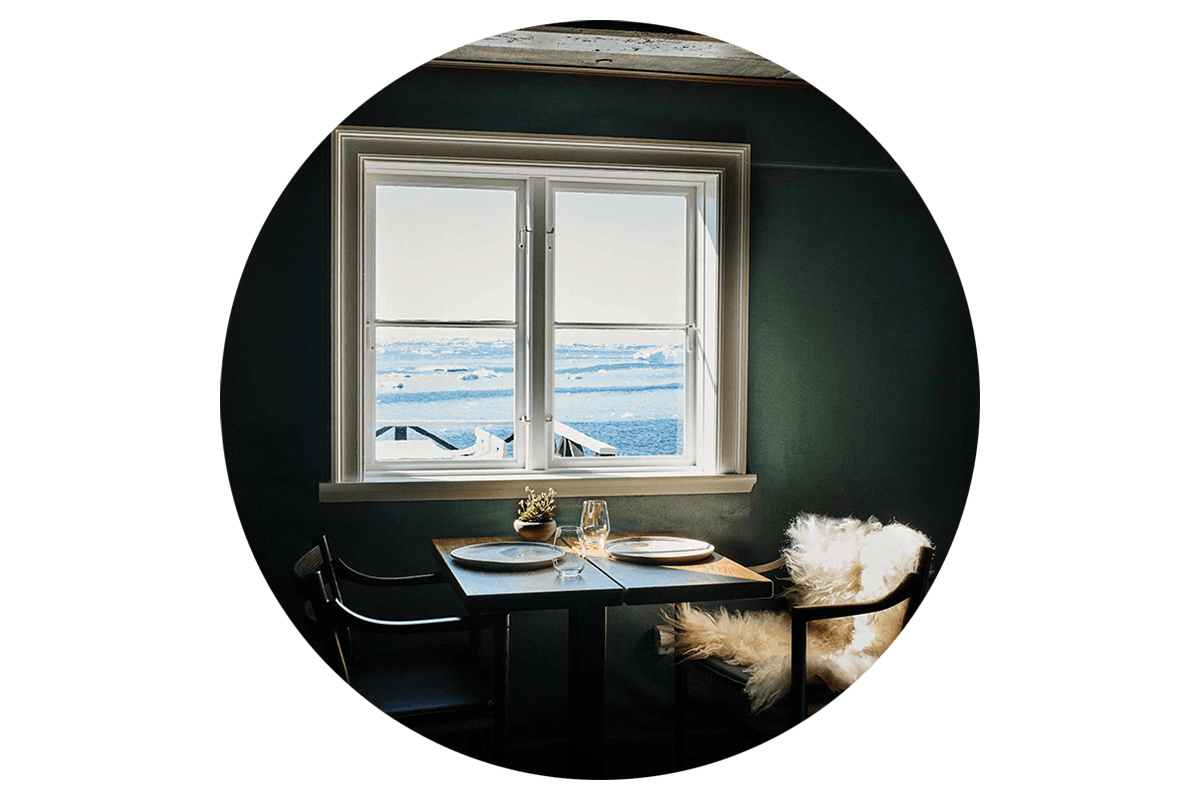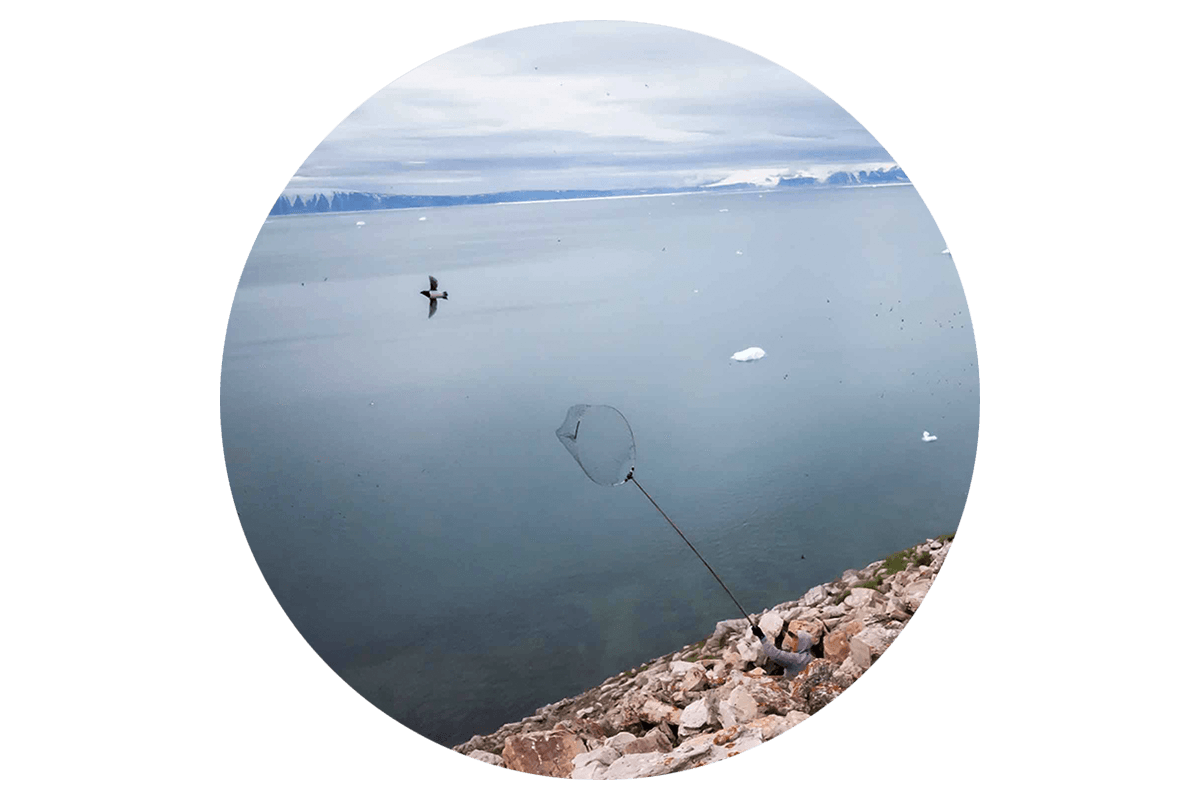Today, on June 21st, we invite you to join us in celebrating Greenland’s National Day – wherever you are in the world.
In Greenlandic, this day is called Ullortuneq which means the longest day of the year. As dawn technically arrives in Nuuk (it has been bright for most of the night), people who have dressed in the Greenlandic national costume hoist up their red and white flag and march together towards the old colonial harbour where celebrations will run all day. Welcome speeches, choir singing, and Nuuk City Orchestra brighten up the mood of National day.
In this article, I introduce some insight of two national symbols of Greenland; the Greenlandic flag and the intricately designed Greenlandic national costume that has developed over the centuries.
The Greenlandic flag
Erfalasorput (Greenlandic)
The credit of designing the Greenlandic flag goes to Thue Christiansen who was a Greenlandic teacher, artist and politician. There were some other proposals such as a green cross with a white background or a white cross with a green background. However the current design was chosen and introduced on the 21st of June in 1985. The name of the national flag is Erfalasorput which means ‘our flag’ in Greenlandic. Unlike the flags of other Nordic countries (Norway, Denmark, Sweden, Iceland, Aaland, the Faroe Islands, and Finland), there is no Nordic cross on the Greenlandic flag. However, the red and white colour of this Arctic inspired flag came from its Danish counterpart. The white background represents the ice cap, the bottom red background represents the ocean, the upper half circle signifies the sun and the bottom half circle signifies a floating iceberg.
Continues further down the page…

